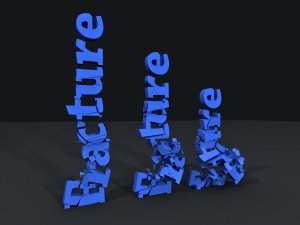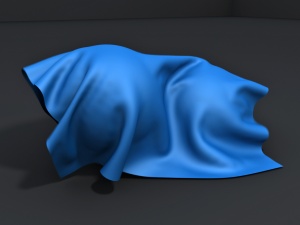A fracture engine tops the list of new features. This update makes heavy use of the popular ICE programming technology in Softimage.
We reported a few months ago how leading vendors of digital content tools are falling all over themselves to add Bullet multi-physics technology to their products. (See, “Luxology and Softimage add Bullet to their arsenal.”) Today Exocortex Technologies, which writes a multi-physics simulator add-in for Autodesk Softimage, updated its Momentum software to version 3. New features include a fracturing engine, and improvement to simulation control, quality rendering, and workflow.

The new fracture engine was developed from the ground up by well-known DCC developer Helge Mathee. It is designed around providing Softimage artists with full control over where and when objects will fracture. The fracturing engine supports dynamic collision-based fracturing, static user-specified pre-fracturing, real-time shatter filtering as well as self-shattering. The process of fracturing as well as the results are both controlled and queryable via Softimage ICE (Interactive Creative Environment) nodes.
Simulation control

Momentum 3 provides four new means of controlling simulations:
ICE Controls for all Simulation Elements: It is now possible to provide ICE-based per-element live control via ICE trees over all Momentum 3 simulations elements.
Force Sculpting. Force sculpting directs explosions through ICE. The key concept is that forces can be sculpted via the specification of a deformed mesh whose dimensions represents the various forces in each direction.
Copy Motion. The copy motion modifier allows the user to copy the motion of one object, usually an explicitly animated object, onto portions of a simulated object. This allows artists to quickly and easily drive portions of a simulation when needed.
Time Warping. It is now possible to rapidly edit the playback timeline for a plotting simulation, simplifying the creation of slow motion effects (ala “Bullet Time” from “The Matrix”), or even allowing for time to run backwards.
Quality UVs, normals and motion blur
Momentum 3 makes sure the new physics effects— even the fracturing results with changing topologies—are not beyond being rendered. There is new support for flexible UV generation on newly created interior faces during fracturing. There is increased use of quality user normals that accurately capture the original object’s surface, while transitioning to the interior face normals. Momentum 3 also provides 3D and 2D motion blur even in situations of changing topology.
Revamped plotting
Momentum 2 added the ability to plot out simulation results for later use. Momentum 3’s plotting engine has been updated to support plotting to file. Having the ability to plot to files means that even if a user has complex changing topology or tens of thousands of objects, the plot file is only limited by available disk space. Plotting to files will appeal to large VFX studios where simulation is done in a separate division from rendering.
More information at the Momentum 3 home page.
Exocortex Momentum 3.0 Release Trailer from helge mathee on Vimeo.






